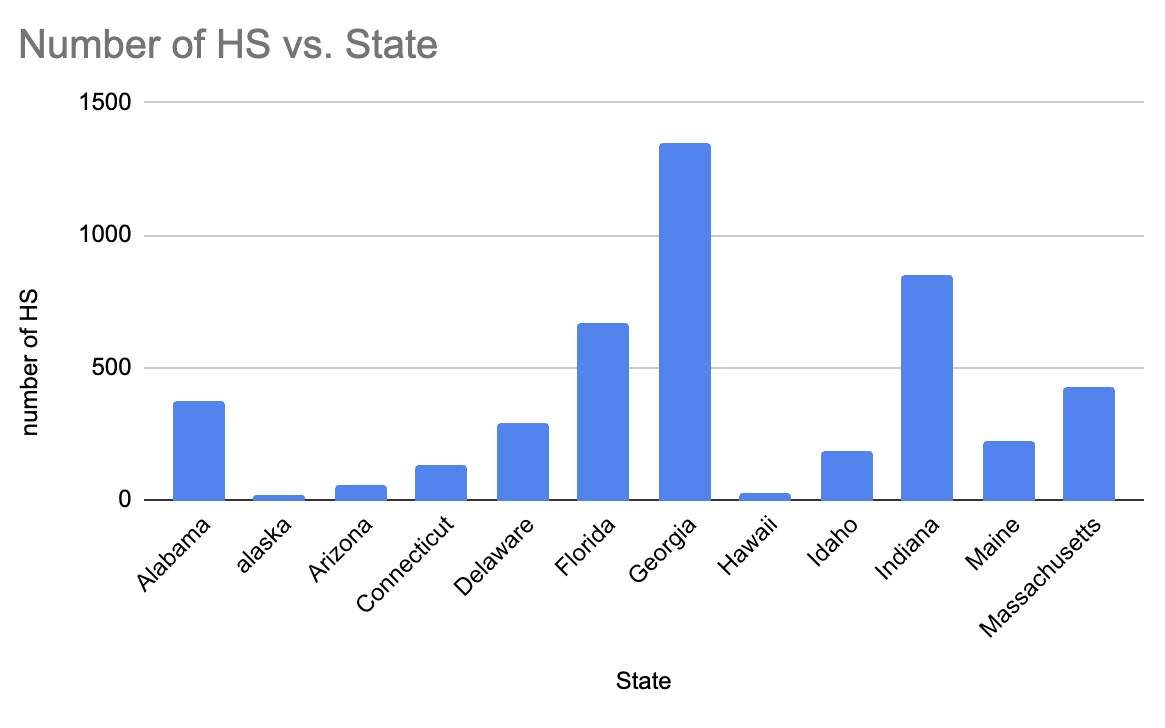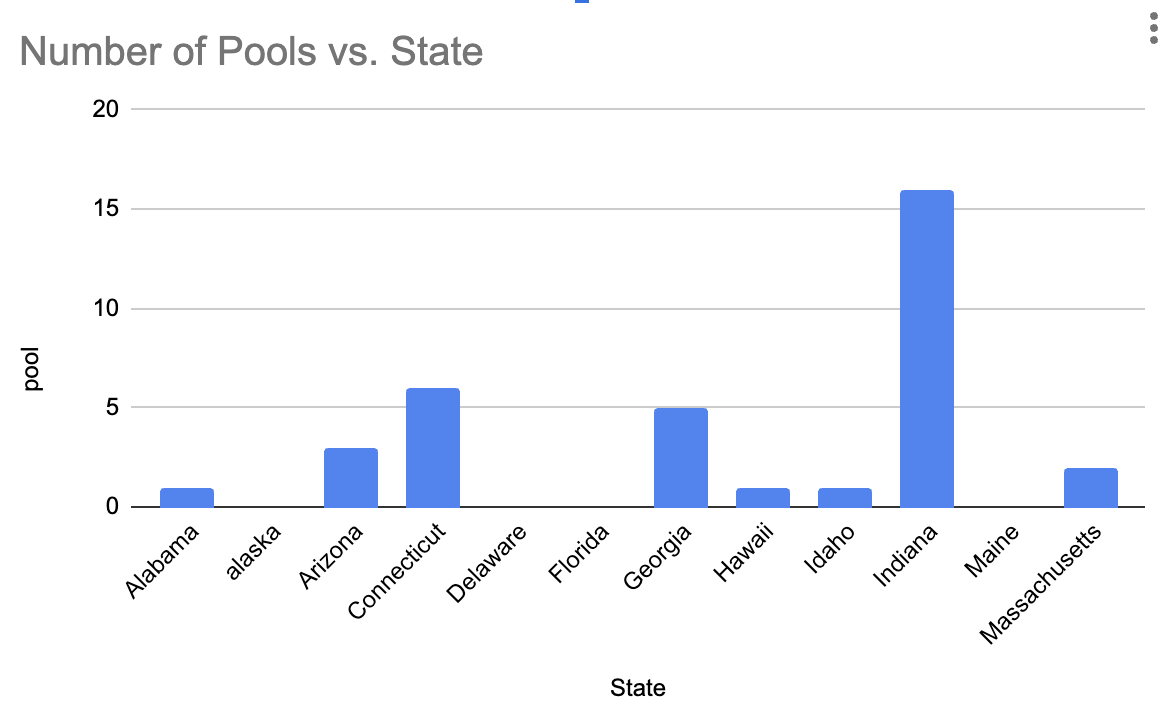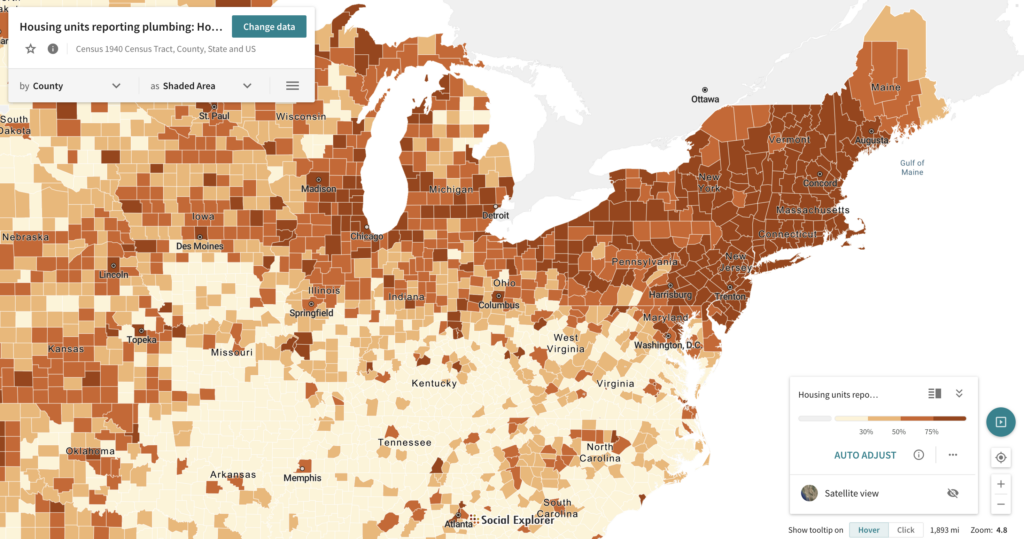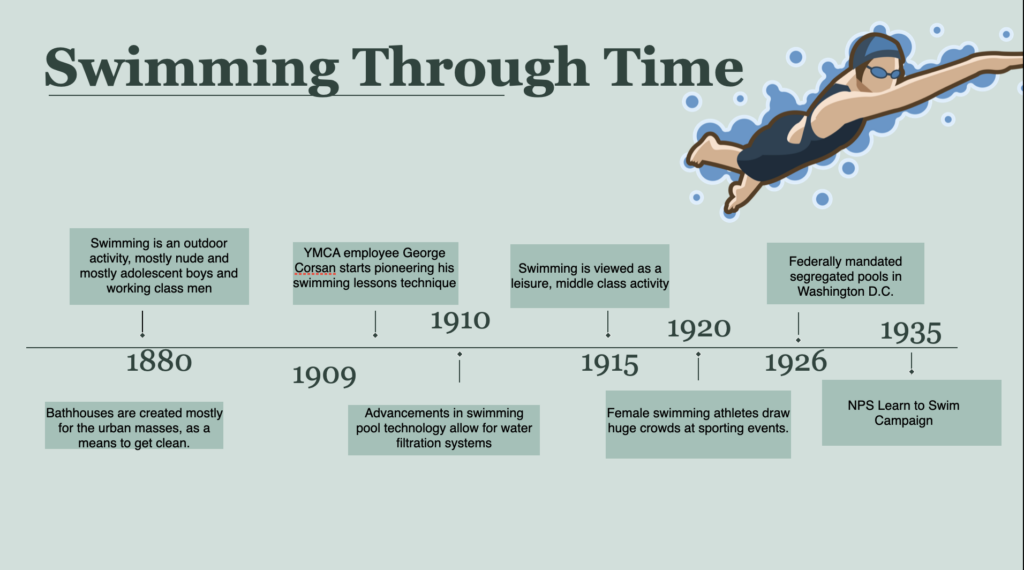Data and Analysis |Literature Review: Swimming by Space | Introduction | Swimming through Childhood- Katrina Tracy | Swimming through Childhood Conclusion
Various geographies influenced how children interacted with swimming. Whether they had running water in their house likely informed their decisions on going to the public baths. Whether they had swimming lessons in school or went to the local YMCA. These following data visualizations and timeline explore various sides of swimming.
1939 Survey, Don Zemlock


These two tables compare and contrast the number of high schools a state reported having in comparison to the number of pools a state reported having. The number of high schools is evidently quite higher than the number of pools, but it is still interesting to see a snapshot of how many pools some states had.
Table
This is a table showing the different accommodations that were made for swimming education programs in school if there was no school pool. As shown in the charts above, many high schools did not have pools in 1937, so here are the ways that schools made up the deficit of swimming facilities. Important to note the amount of states that relied on YMCA pool facilities and city pools.
| State | Answer | Where | By whom |
| Alabama | No | ||
| Arizona | Yes | City Pool | School Instructor |
| Connecticut | Yes | YMCA | School Instructor |
| Delaware | Yes | YMCA | School Instructor |
| Florida | Yes | City Pool | School Instructor |
| Georgia | Yes | YMCA | School Instructor |
| Idaho | Yes | YMCA | School Instructor |
| Illinois | Yes | YMCA | |
| Indiana | Yes | YMCA | |
| Kansas | Yes | YMCA and YWCA, Public Pools | |
| Louisiana | Yes | YMCA | American Red Cross |
| Maryland | Yes | YMCA | American Red Cross |
| Massachusetts | Yes | YMCA and Clubs | Parks Department |
| Michigan | Yes | Lakes | |
| Mississippi | Yes | Special Arrangements | PE Department |
| Montana | No | ||
| New Jersey | Yes | YMCA and City Pools | Private Instructor |
| New York | Yes | Public Baths | PE |
| Oregon | Yes | City Pools | Community Instructor |
| South Carolina | No | ||
| Texas | Yes | City Pool, Junior High School | American Red Cross, PE Instructor |
| Hawaii | Yes | YMCA, YWCA, Natatoriums | PE Teachers, Swimming Directors |

This is a map made on social explorer, it shows the percentage of housing units who reported having water in the 1940 census. It can be extrapolated that the units that did not have water in their homes would have to find an alternate way to clean themselves and thus relied more on outdoor water sources or public bathing areas.

This timeline shows a broad overview of important events that informed swimming culture in the United States. Various larger organizations influenced the larger creations of swimming culture. Swimming as an activity for children the way we know it today was largely created in the early 1900s. Before that it was more about cleanliness and masculinity.